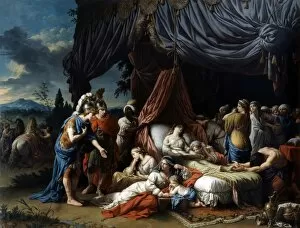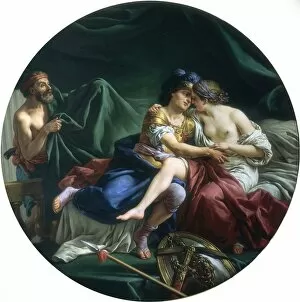1725 1805 Collection
"Exploring the Artistic Legacy of Jean-Baptiste Greuze (1725-1805)" Step into the world of 18th-century French art with Jean-Baptiste Greuze
For sale as Licensed Images
Choose your image, Select your licence and Download the media
"Exploring the Artistic Legacy of Jean-Baptiste Greuze (1725-1805)" Step into the world of 18th-century French art with Jean-Baptiste Greuze, a renowned artist whose works continue to captivate audiences today. Born in 1725 and passing away in 1805, Greuze left an indelible mark on the art scene with his exquisite portraits and emotionally charged compositions. One such masterpiece is "Head of a Girl" from 1763, where Greuze skillfully captures the innocence and vulnerability of youth. The delicate brushstrokes bring life to this young subject, inviting viewers to ponder her thoughts and dreams. In another striking piece titled "Head of a Young Woman, " created around 1785, we witness Greuze's mastery at its finest. This portrait exudes elegance and grace as he portrays the beauty and wisdom that come with age. The subtle details in her expression hint at a lifetime filled with experiences. Greuze's talent extended beyond portraiture; he also delved into engraving. One notable example is his depiction of Denis Diderot in 1766, showcasing his ability to capture not only physical likeness but also inner character through intricate lines etched onto metal plates. As we delve further into this era's artistic landscape, we encounter other notable figures like Madame Jean-Baptiste Nicolet Anne Antoinette Desmoulins – individuals who inspired or influenced artists like Greuze himself. Their stories intertwine within these vibrant canvases, offering glimpses into their lives during this transformative period. Additionally, let us not forget Louis Lagrenee (also known as l'Aine), whose work "Mars and Venus surprised by Vulcan" showcases mythological narratives infused with passion and drama. Painted around the same time as some of Greuze's masterpieces, Lagrenee's contribution adds depth to our understanding of French art during this period.









